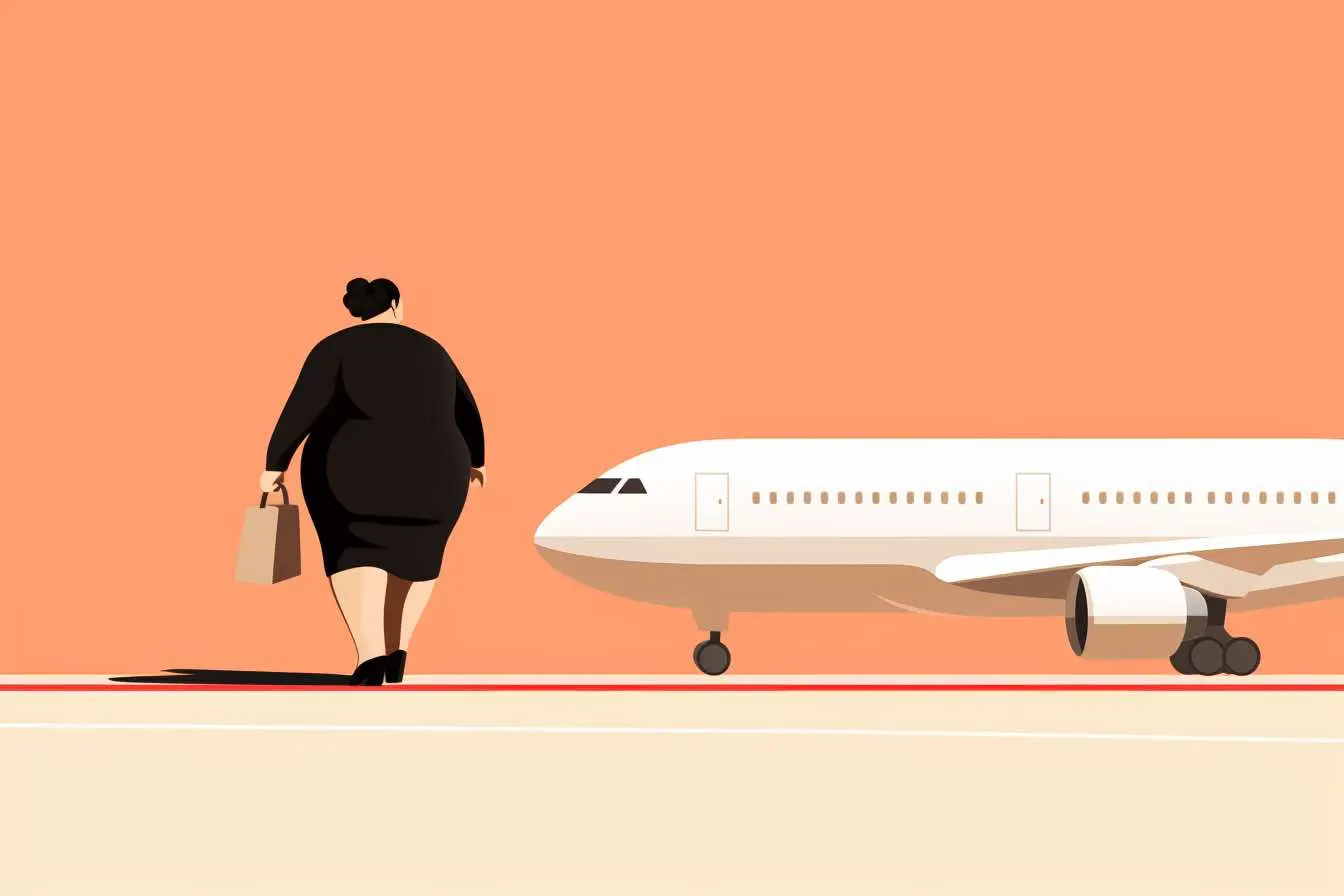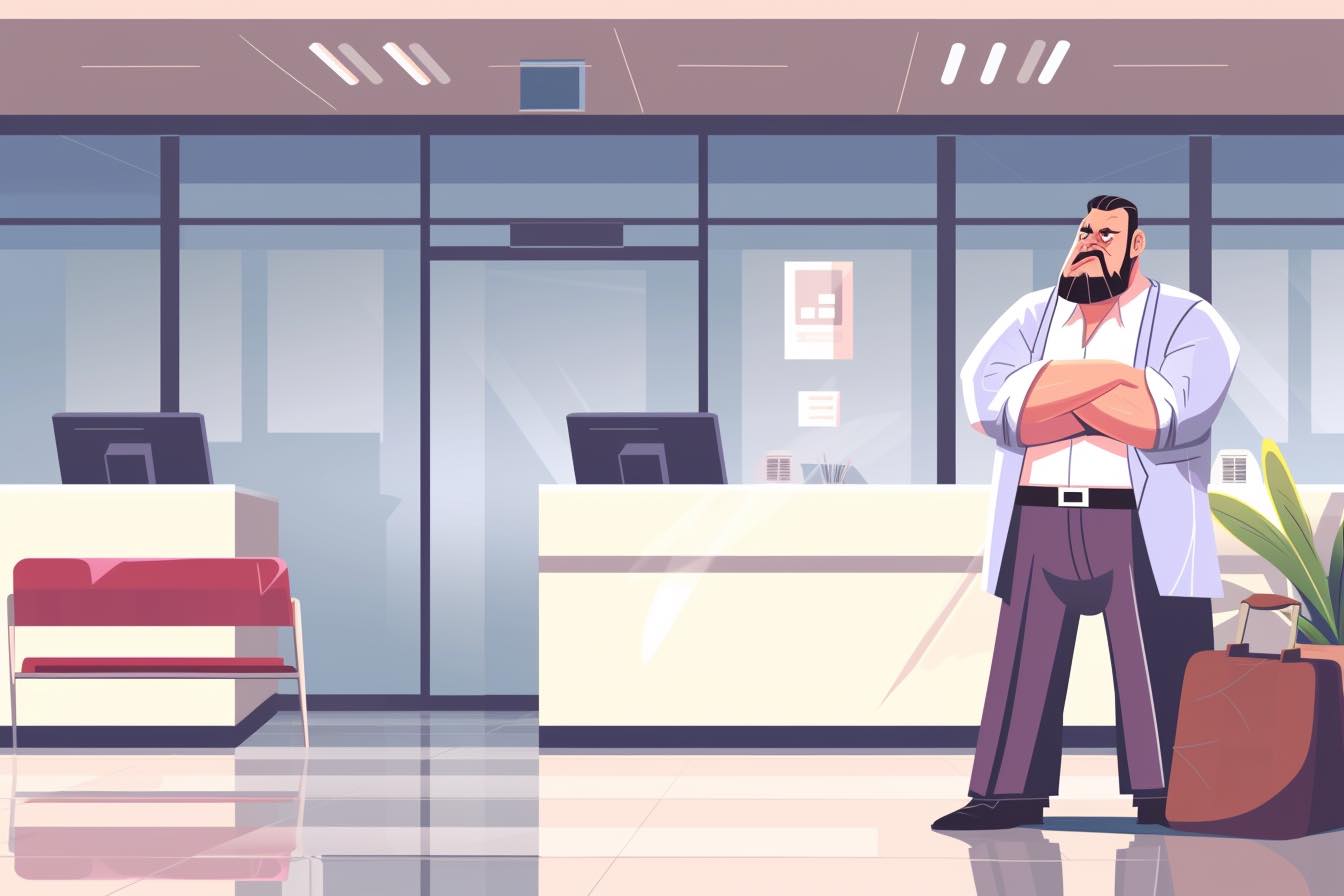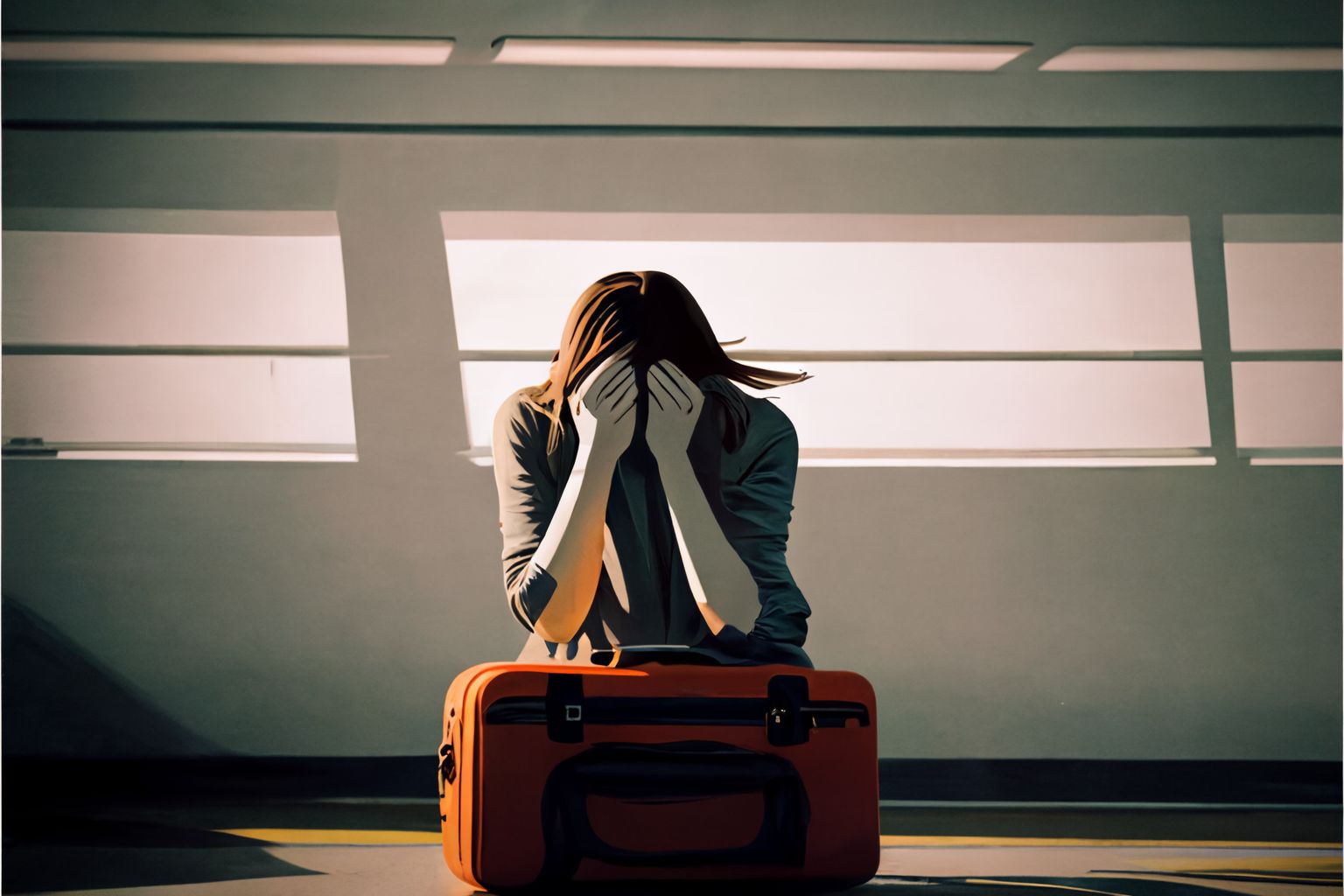Americans are getting larger. Airline seats are shrinking. So confrontations between plus-size passengers and their fellow travelers are inevitable.
The average American man weighs 15 pounds more than he did 20 years ago, according to the Centers for Disease Control and Prevention. And the average American woman weighs 16.2 pounds more.
The average seat pitch, a rough measure of legroom, has dropped from 35 inches in the 1970s to about 31 inches today. And the average width has shriveled from 18 inches to about 16.5 inches.
Airlines are more sensitive to territorial seat skirmishes than ever. But air travelers have developed their own tricks, too. They might save you from being squeezed on your next trip.
What airlines do with plus-size passengers
Oversize airline passengers fall into two broad categories. Some travelers can’t fit into the seats because of their hip size. Others are too tall to contort into an economy-class seat with limited legroom. The ones that generate the most complaints, perhaps unfairly, are the ones who spread into the next seat.
That’s what happened to 73-year-old Sam Cristol. He found himself seated next to a 6-foot-7, 500-pound passenger on a 5.5-hour JetBlue flight from Fort Lauderdale to San Francisco.
“This guy looked like an NFL lineman,” says Cristol, a food broker from Lake Worth, Florida. “He took up half my seat. My other half was in the aisle while I had to hold on to the seat in front of me.”
Cristol complained to JetBlue, which apologized for the inconvenience. JetBlue offers seat belt extenders for oversize airline passengers on its site but is otherwise silent on its passengers-of-size policy. Other airlines require large travelers to buy two seats.
Crewmembers try to fix these onboard confrontations before takeoff. For example, a flight attendant would have tried to re-seat a passenger like Cristol. But unfortunately, it was a completely full flight. He also might have asked to trade seats with a smaller passenger, but that wasn’t an option either.
What travelers are doing about plus-size passengers
So beyond the usual advice – change seats, try to persuade a smaller passenger to take your place, beg for an upgrade – what do you do?
A little kindness would probably take you a long way, says Casey Gardonio-Foat, a small business owner from St. Louis.
“Have empathy for the larger person,” she says. “Remember, they are likely more uncomfortable than you are. That’s because of shrinking airline seats and because of bias and routinely awful treatment of larger people in American society.”
Suzanne Dixon, a dietitian from Portland, Oregon, agrees that being nice can make the trip more survivable.
“When I’m seated next to a large passenger, I greet them with a smile,” she says. “No matter how much of a squeeze, a positive and nonjudgmental attitude is important.” (Related: Why tall passengers hate air travel, and what they’re doing about it.)
A polite request can help, too. On Stacy Caprio’s last flight, her seatmate took over her armrest and encroached into her personal space. “I asked him, ‘Could we please each keep our arms inside our own seats?'” says Caprio, who works for a Canadian coupon website. “He grunted but then mostly complied which made the flight much more pleasant for me.”
Official plus-size passenger policies
- American Airlines suggests that passengers who need more room purchase an extra seat at the time of booking. If you don’t, you can ask an airport agent to find out if two adjacent seats are available.
- Delta Air Lines does not require passengers to buy an extra seat. But if a passenger encroaches on another passenger, the airline may either move you to a different location or make you take the next flight.
- Southwest Airlines effectively gives overweight passengers a second seat at no extra charge. You have to pay for the second seat but will get a refund after the flight.
- United Airlines requires that you purchase a second seat if you need it, and will sell it to you at the same price as the first seat. If you need an extra seat on the day of your flight but haven’t reserved it, you may have to buy it at a more expensive rate.
What are your rights as a plus-size passenger or their seatmate?
- Fly later. If you’re seated next to a plus-size passenger who can’t fit into one seat and your schedule is flexible, ask a flight attendant if you can take the next flight. If there’s room on the next plane, you might be better off traveling later.
- Know your legal rights. Unfortunately, you don’t really have that many. The contract of carriage, the legal contract between you and the airline, does not say you have a right to a full seat. Generally, the crew’s attitude is that if you can sit in the seat and use your seat belt, you’re good to go.
- Know what to expect when you complain. As a practical matter, airlines will apologize and maybe offer a voucher for your discomfort. Discreetly take pictures of the incursion and send them with your complaint. If the airline doesn’t respond appropriately, consider asking a third party for help with your case, such as Elliott advocacy.
- Check your airline’s policies before you book. With few exceptions, every airline has its own “plus-size passenger” policy. Make sure to check your preferred airline’s policies before you book your ticket.




